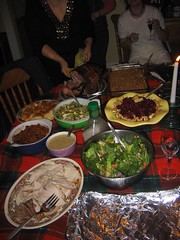This is a response I wrote up for Tuesday’s class on The Poetics…
For Aristotle the climax of a Tragedy should have two characteristics: that it be both surprising and inevitable. These qualities can be found in non-linear or computational media, but in different ways. If you are trying to tell a story but allow changes to the order of the plot, or the behavior of the characters, or prevent certain events from happening at all, the sense of inevitability is inherently removed. Perhaps surprise is heightened, as the audience is never quite sure what to expect. This tends to put the audience in a position of trying to figure out just what is going on. In traditional linear media a certain level of confusion might be tolerated, even welcomed, if there is some payoff for it. In non-linear experiences (games, for example) the payoff of overcoming this confusion — putting all the puzzle pieces together — can be even greater than that experienced at the resolution of a Tragedy — IF the audience is engaged and/or committed enough to suffer through the learning curve, and IF there is indeed the a resolution to be had (some non-linear pieces stop at the level of invoking confusion). Here is where the inevitable kicks back in — when some solution or pattern or story becomes obvious – and the audience can experience the same ‘A-ha!’ moment which is so critical in Aristotle’s definition of a Tragedy’s climax. Indeed, our minds are pattern matchers, and pattern makers — we want to see disparate elements resolve themselves into something recognizable–take this week’s LeCoq exercises — given enough effort and a little bit of structure, and we can make even the most absurd elements seem ‘inevitable’.




